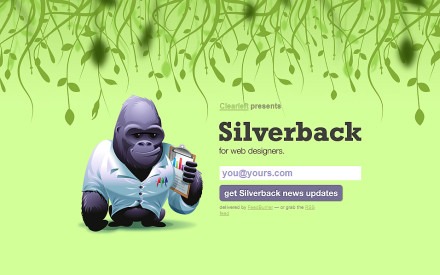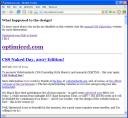In the light of recent ideas that Web designers should spend less and less time, making fixes for Internet Explorer 6 (this browser is almost 10 years old already), I was curious to compare some browser stats for optimiced.com.
But first, a couple of words about the reasons why support for IE6 should be limited.
The Reasons
Dan Cederholm: How I Might Deal with IE6
Roger Johannson: No more pixel perfectionism in IE 6
Basically, the idea is as follows: Limit the time, which you dedicate to IE6, to the possible minimum. Yes, the design will look a bit different in this old browser, but so what? The important thing is that the design should work, and that there are no problems with the accessibility or functionality of the website.
In certain cases, you can even decide, if you wish to ensure a minimum support for IE6, or completely ignore it, in a similar way that Netscape 4.7x was ignored years ago, using the @import command for CSS styles.
For IE6, you can use IE conditional comments, like in this example:
<!--[if gte IE 7]><!-->
<link rel="stylesheet" type="text/css" media="screen, projection" href="screen.css" />
<!--<![endif]-->
“Translated” to human language, this small piece of HTML code means the following:
If Internet Explorer is version 7 (or higher), the CSS file ‘screen.css’ will be loaded. Otherwise, the file won’t be loaded (IE6 or lower). All other browsers (Firefox, Opera, Safari, etc.) will load the file screen.css quite normally. I have tested this in Firefox 3, Safari 3.2, IE7, IE6, and the code works perfectly.
Open this page in Firefox, Opera, Safari or IE7+ — the background of the page should be green, and it means that the ‘screen.css’ file is loading normally.
Open the same page in IE6 (or even older version) — the background should be white, and it means, ‘screen.css’ is not loading for it.
And now about my browser stats.
I decided to check, how many site visitors of my personal blog are using Internet Explorer, how many of them are using version 6, and also, how stand up the numbers for Firefox and a few other popular browsers of today.
The Numbers
As a base for my comparison, I took the last month (Jan. 22 — Feb. 22 2009), and I also compared this period with the same period, but 1 years ago (Jan. 22 — Feb. 22 2008).
Firefox (Jan. 22, 2009 — Feb. 22, 2009): 56.18% of all visits
Firefox (Jan. 22, 2008 — Feb. 22, 2008): 49.79% of all visits
Firefox: +6.39% increase in number of visits, during a period of 1 year
Internet Explorer (Jan. 22, 2009 — Feb. 22, 2009): 33.47% of all visits
Internet Explorer (Jan. 22, 2008 — Feb. 22, 2008): 40.90% of all visits
Internet Explorer: -7.43% decrease in number of visits, during a period of 1 year
At the present moment, Opera is around 5%, Chrome is around 3.2% and Safari around 1.5% (of all visits to my site). All other browsers (Mozilla, for example) have so low numbers, that they can safely be ignored.
The tendency is clear. Firefox slowly, but constantly is increasing its influence, while Internet Explorer makes exactly the opposite. Safari, Opera, and also Chrome, are present in the whole picture, but quite modestly. Firefox and IE are the “big players”, or at least, this is true for my blog visitors… :)
Now let’s see the numbers for the different versions of IE.
IE7/IE8 vs. IE6
IE7 (Jan. 22, 2009 — Feb. 22, 2009): 55.22% from the total share of IE in the stats
IE7 (Jan. 22, 2008 — Feb. 22, 2008): 41.59% from the total share of IE in the stats
IE7: +13.63% increase in number of visits during a period of 1 year
IE6 (Jan. 22, 2009 — Feb. 22, 2009): 43.64% from the total share of IE in the stats
IE6 (Jan. 22, 2008 — Feb. 22, 2008): 57.18% from the total share of IE in the stats
IE6: -13.54% decrease in number of visits during a period of 1 year
The trend here is also clear: IE6 slowly loses grounds, while IE7 is becoming more and more widespread.
IE8 Beta also appears in the stats, but the numbers are very low — around 1%.
The Verdict
Firefox: 56.18% from all visits to the website
Internet Explorer: 33.47% from all visits to the website
— IE7: ~ 55% (of all IE visits)
— IE6: ~ 43% (of all IE visits)
In total, my users, which are using IE6, are less than 15%. All others use Firefox, IE7, Safari, Opera and Chrome.
Is 15% too low a number, so I can apply the CSS “filtering” for IE6? No, it is too early for that, I think.
But I guess that in 1-2 years the share of IE6 will become so low, that there really won’t be any point in trying to fix the XHTML/CSS code for it.
And then IE6 will become history, in a much similar way that Netscape Navigator 4.7x became history a few years ago — something which made me very happy at the time! :-)



